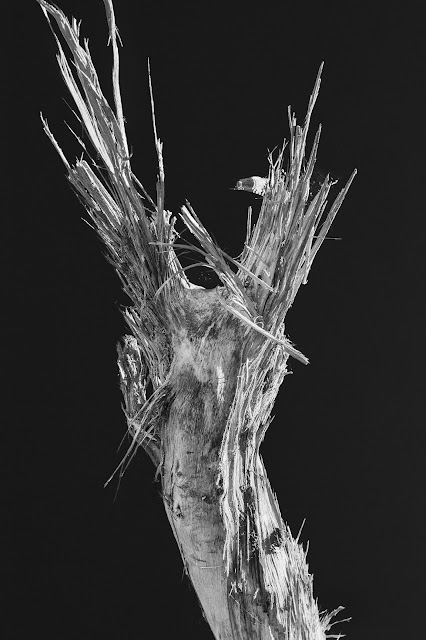Photography Exhibition Review | Brian Rope
Stephen Dupont | amBUSH Gallery, Kambri (ANU) | Until 24 October 2021
This exhibition comprises 21 large photographic prints detailing various devastating ecological events around Australia, that have made award-winning Australian photographer Stephen Dupont realise the inevitability of the shift in conversation from ‘Is climate change happening?’ to ‘Is it too late?’
Inspired by his young daughter Ava – a climate activist – Dupont’s discussions about environmental issues ask the big question: is it possible to save the planet, or have we pushed Mother Nature to the brink of extinction? Are We Dead Yet? is part of a long-term artistic documentation of the effects of climate change on our nation.
In a review published 18 months ago, I confessed having struggled somewhat for several months seeing so many images of the bushfire crisis. On social media I had found it very difficult to ‘Like’ excellent images that revealed the anxieties all of us felt. Now here we are still seeing images of the aftermath of drought, bushfires and the pandemic – not only in this exhibition but numerous others.
Given Dupont’s experience and expertise, it was not surprising to see very high-quality images on display. Shot over the course of the past few years, in locations across several States, Dupont’s photographic journey tells striking visual stories, and conveys a sense of urgency. He wants to motivate us, his audience, to question our roles and responsibilities in these real-time catastrophes.
Using a solitary figure swimming in the ocean during a dust storm, a flooded football ground, the remains of a caravan, charred bushland, the parched ground of drought-stricken regions, and the rich colours of smoke and dust-filled skies, Dupont socks it to us. If we were previously immune to its impacts, or unchallenged by climate change, he wants to infect us with concern right now.
Some of the images reveal the impacts of climate change less obviously than do others. The remnants of a tree, used on the exhibition poster and in the catalogue, is probably the most graphic despite its simplicity; but another more effectively reveals the widespread and devastating destruction in the Tarkine region.
 |
Tarkine, 2018 © Stephen Dupont |
An image of a dust storm is very dramatic and powerful, showing the dust towering over a lone bather in the sea. Other images of dust storms remind us that they are widespread and commonly occur.
 |
Scarborough Beach Dust Storm, 2020 © Stephen Dupont |
Floating burnt embers during a bushfire are the real story element in a quite strangely beautiful story of sunlight streaming through the fire’s smoke. Once again, whether we need it or not, we are reminded by this and half a dozen other images that these types of fires were widespread in 2019 and 2020.
 |
Hillville Fires 02, 2019 © Stephen Dupont |
Another bushfire image clearly shows the human impact. The face of the man in it needs no words to tell of his emotions. And another equally, and poignantly, tells of the impact through a rather sad looking Christ figure.
 |
Bodalla Fires, 2020 © Stephen Dupont |
And an image of the skeletal remains of a caravan owned by Dupont’s friend, completely destroyed by fire in the devastating 2020 black summer bushfires has just been named as a finalist in the Australian Life competition (albeit with a different title). This powerful photograph clearly conveys just what such a fire can do and will, I suspect, be a strong contender in that competition.
A view from above of whites and blacks of trees impacted by dieback and fire is visually arresting. For me, the patterns make it the strongest artwork in the exhibition.
 |
Snowy Mountains, 2020 © Stephen Dupont |
Whilst the exhibition is technically open, the gallery is closed during the ACT COVID lockdown expected to run until 17 October. In the meantime there is a walk through of the exhibition here. All the images may also be seen on the artist's website here.
This review was published in the Canberra Times on 18/9/21 here and is also on the author's own blog here.